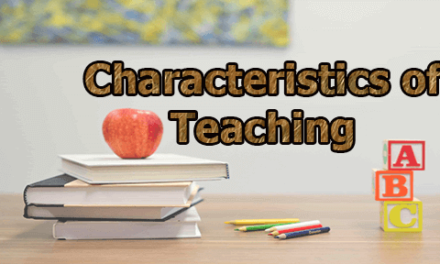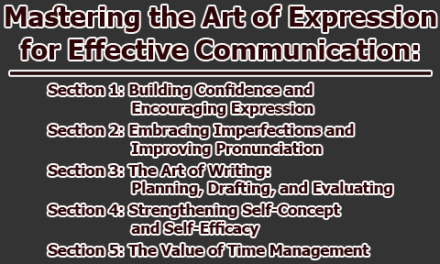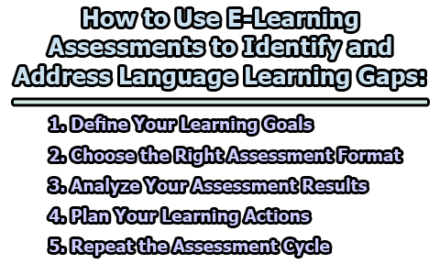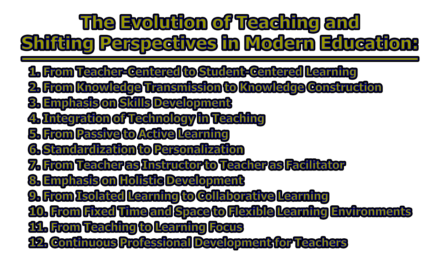The Flipped Classroom Revolution: A New Era in Education
In the ever-evolving landscape of education, a groundbreaking pedagogical approach has emerged, promising to reshape the way we teach and learn. Welcome to “The Flipped Classroom Revolution: A New Era in Education.” For generations, traditional teaching models have prevailed, with instructors delivering lectures in class and assigning homework for independent study. However, recent years have witnessed the ascent of a transformative educational concept—the flipped classroom. This innovative approach flips the conventional teaching model on its head, challenging the status quo and propelling education into a new era. In this exploration, we delve into the origins, benefits, criticisms, and promising future of the flipped classroom, offering a comprehensive view of this pedagogical revolution that is changing the face of learning.
The Impact of the COVID-19 Pandemic:
The emergence of the COVID-19 pandemic dramatically reshaped the educational landscape, forcing institutions to adapt rapidly to new challenges. In this extraordinary context, the concept of flipped classrooms took on even greater significance. The traditional model of in-person, classroom-based instruction faced unprecedented disruptions, compelling educators to explore alternative methods that could be conducted remotely or in a hybrid fashion. Flipped classrooms, which had been gaining traction in education before the pandemic, suddenly became a highly relevant and adaptable approach to instruction.
What Is a Flipped Classroom?
The concept of a flipped classroom represents a paradigm shift in education, challenging traditional teaching methods. In this innovative pedagogical approach, students encounter a fundamental inversion of the traditional learning process. Instead of teachers delivering lectures in class, students are introduced to instructional content before the scheduled class time. This preparatory phase typically involves students engaging with pre-recorded video lectures, assigned readings, or digital resources, allowing them to build a foundational understanding of the subject matter independently (Johnson, 2013).
Once students arrive in the classroom, they step into an environment characterized by active learning and engagement. Class time is dedicated to interactive and collaborative experiences, such as group discussions, problem-solving activities, and hands-on projects. Here, the teacher’s role evolves from being the primary disseminator of information to a facilitator or guide, actively supporting students on their learning journey, addressing questions, and nurturing critical thinking skills (Tucker, 2012).
This transformative model also emphasizes flexibility, allowing students to progress at their own pace, revisit instructional material as needed, and accommodate various learning styles and abilities. The flipped classroom’s essence lies in enhancing student engagement, promoting a deeper understanding of subject matter, and fostering student-centered learning experiences (Bergmann & Sams, 2012).
Key Components of a Flipped Classroom:
The key components of a flipped classroom represent a pedagogical revolution in education. This innovative approach challenges the traditional teaching model by restructuring the learning process:
1. Pre-Class Preparation: In a flipped classroom, students are encouraged to proactively engage with the foundational material before attending class. This preparation typically involves reviewing pre-recorded video lectures, assigned readings, or other digital resources. By acquiring this foundational knowledge independently, students arrive at class well-prepared to engage in more meaningful classroom activities (Bishop & Verleger, 2013).
2. Active Learning: Unlike traditional lecture-based classrooms, a flipped classroom prioritizes active learning during in-class sessions. Here, students participate in dynamic and interactive learning experiences such as group discussions, collaborative projects, problem-solving activities, and hands-on applications of the subject matter. This shift from passive to active learning promotes deeper understanding and critical thinking (Bergmann & Sams, 2012).
3. Teacher as Facilitator: In the flipped classroom model, the teacher’s role evolves from being the primary source of information to that of a facilitator or guide. Educators assist students in their learning journey, answer questions, and stimulate critical thinking. This transformation in the teacher’s role fosters a more collaborative and supportive classroom environment (Tucker, 2012).
4. Flexibility: Recognizing the diversity of students’ learning styles and paces, the flipped classroom model offers flexibility. Students can revisit the instructional material as needed and progress at their individual speeds. This adaptable approach ensures that every student can grasp the material at their own pace, promoting inclusivity (Tucker, 2012).
5. Enhanced Engagement: Active participation and engagement are foundational in a flipped classroom. Students are motivated to participate actively in class activities because they have already engaged with the content before class. This heightened engagement creates a vibrant and dynamic learning atmosphere (Bergmann & Sams, 2012).
6. Peer Interaction: In a flipped classroom, peer-to-peer collaboration is encouraged. Students work together on assignments, exchange ideas, and benefit from diverse perspectives. This collaborative environment enhances the learning experience by promoting teamwork, communication skills, and a deeper understanding of the subject matter (Roach, 2014).
7. Immediate Feedback: One of the notable advantages of the flipped classroom is the opportunity for immediate feedback. Teachers can address misconceptions and provide guidance during in-class activities in real-time. This personalized feedback contributes to a deeper understanding of the subject matter and helps students overcome challenges more effectively (Mason, Shuman, & Cook, 2013).
8. Improved Learning Outcomes: The overarching goal of the flipped classroom approach is to enhance learning outcomes. By empowering students to explore concepts at their own pace, engage in active learning, and receive immediate feedback, it fosters a deeper comprehension, better retention, and practical application of knowledge. Ultimately, the flipped classroom cultivates critical thinking skills and lifelong learning habits, leading to improved academic achievements (Strayer, 2012).
Benefits of the Flipped Classroom Model:
The flipped classroom model offers a range of benefits for both students and educators, contributing to its increasing popularity in education:
1. Enhanced Engagement: A prominent advantage of the flipped classroom model is the heightened level of student engagement. As students are introduced to foundational concepts before class, they arrive prepared and ready to actively participate in in-class activities. This increased interaction, whether through discussions, debates, or group projects, not only captivates students but also encourages them to take ownership of their learning, ultimately leading to improved motivation and academic performance (Bishop & Verleger, 2013).
2. Personalized Learning: The flipped classroom model is inherently designed to cater to diverse learning styles and individual pacing. Students have the flexibility to revisit pre-class materials as often as needed to solidify their understanding. This personalized learning approach ensures that each student can progress at their own pace, accommodating different learning speeds and abilities, promoting inclusivity and equitable learning (Tucker, 2012; Bishop & Verleger, 2013).
3. Deeper Understanding: With foundational content delivered outside of class, valuable in-class time can be dedicated to deeper exploration and application of knowledge. Students have the opportunity to delve into complex topics, analyze real-world scenarios, and engage in critical thinking exercises. This fosters a deeper understanding of the subject matter as students move beyond rote memorization to active comprehension and synthesis (Strayer, 2012; Roach, 2014).
4. Improved Interaction and Collaboration: A key advantage of the flipped classroom model is the emphasis on interaction and collaboration. In traditional lecture-based settings, students often have limited opportunities to engage with their peers. However, in the flipped classroom, class time becomes a hub of intellectual exchange. Students can work together on projects, engage in spirited debates, and share diverse perspectives. This collaborative environment not only enriches the learning experience but also hones crucial skills in communication, teamwork, and problem-solving (Bergmann & Sams, 2012; Roach, 2014).
5. Individualized Attention: Instructors flipping their classes can provide more individualized attention to their students. During in-class activities and discussions, educators can identify and address students’ misconceptions and questions in real-time. This personalized feedback contributes to a deeper understanding of the subject matter and helps students overcome challenges more effectively. It also fosters a positive teacher-student relationship, as educators become facilitators of learning rather than just deliverers of information (Strayer, 2012; Bergmann & Sams, 2012).
6. Preparation for Real-World Skills: The flipped classroom model goes beyond merely imparting academic knowledge; it prepares students for the demands of the real world. By emphasizing problem-solving, collaboration, and application of knowledge, instructors ensure that students develop skills that are highly valuable in their future careers. This practical and hands-on approach aligns with the evolving expectations of employers and the demands of a rapidly changing job market (Bergmann & Sams, 2012; Tucker, 2012).
7. Immediate Feedback and Support: Instructors in a flipped classroom have the opportunity to provide immediate feedback and support. During in-class activities and discussions, teachers can address misconceptions, clarify doubts, and guide students in real time. This personalized attention ensures that students receive the support they need to progress effectively. It also fosters a positive and constructive learning environment (Mason, Shuman, & Cook, 2013).
Is Flipped Learning More Effective Than Lecture-Based Learning?
Whether flipped learning is more effective than lecture-based learning depends on various factors, including the specific context, the subject matter, the quality of instruction, and the learning objectives. Both flipped learning and lecture-based learning have their strengths and weaknesses, and their effectiveness can vary depending on how they are implemented. Here are some considerations to help assess their relative effectiveness:
Flipped Learning:
- Active Engagement: A fundamental strength of flipped learning is its ability to promote active student engagement. In this approach, students are expected to interact with pre-class content, such as video lectures or readings, before attending in-person or virtual class sessions. This proactive engagement with the material can lead to improved understanding and retention as students come to class prepared to participate actively in discussions and activities (Tucker, 2012).
- Individualized Pace: Flipped learning allows students to learn at their own pace, a feature particularly beneficial in accommodating diverse learning styles and abilities. Students can revisit the pre-class materials as often as needed, ensuring that they grasp concepts thoroughly before moving forward (Bishop & Verleger, 2013).
- Higher-Order Thinking: Flipped classrooms often emphasize higher-order thinking skills such as critical thinking, problem-solving, and the application of knowledge. During in-class discussions and activities, students are encouraged to apply the concepts they’ve learned to real-world scenarios, fostering a deeper understanding of the subject matter (Tucker, 2012).
- Interaction and Collaboration: Collaboration and peer-to-peer interaction are integral to the flipped learning experience. Students work together on projects, engage in debates, and share diverse perspectives. This collaborative environment not only enriches the learning experience but also helps students develop crucial skills in communication, teamwork, and problem-solving (Bergmann & Sams, 2012).
- Immediate Feedback: Instructors in flipped classrooms have the opportunity to provide immediate feedback during in-class activities. This real-time feedback helps students clarify doubts and correct misconceptions, contributing to a more effective learning process (Mason, Shuman, & Cook, 2013).
Lecture-Based Learning:
- Coverage of Content: Lecture-based learning can efficiently cover a large volume of content within a relatively short period. It is often employed for delivering foundational knowledge and introducing new concepts, making it suitable for courses with extensive subject matter (Tucker, 2012).
- Consistency: Lectures offer a structured and consistent format that is easy for students to follow. They provide a clear roadmap for understanding the course material and can serve as a dependable foundation for further exploration (Bishop & Verleger, 2013).
- Accessibility: Lectures can be delivered in various formats, including in-person, live-streamed, or recorded, making them accessible to a wide range of learners. This flexibility ensures that students can access the content in a way that suits their preferences and schedules (Tucker, 2012).
- Efficiency: Lecture-based learning can be efficient in terms of time and resources. It allows instructors to reach a large number of students in a single session, making it a practical choice for courses with a substantial enrollment (Mason, Shuman, & Cook, 2013).
- Expertise: Lectures often involve the expertise of an experienced instructor who can distill complex information into digestible content. This expertise can provide students with a comprehensive introduction to a subject (Bergmann & Sams, 2012).
The effectiveness of either approach depends on the learning goals and objectives of the course, as well as the instructional methods employed. For instance:
- Flipped learning may be more effective when the emphasis is on active learning, critical thinking, problem-solving, and application of knowledge. It is well-suited for subjects that require in-depth understanding and where students benefit from discussion and interaction.
- Lecture-based learning may be more effective when the goal is to convey foundational knowledge efficiently. It can work well for introductory courses or when the primary objective is to provide a structured introduction to a subject.
In practice, many educators find a blended approach effective, combining elements of both flipped and lecture-based learning to create a balanced and engaging learning experience. The choice between these approaches should be guided by the specific educational goals, the needs of the students, and the resources available to the instructor (Roach, 2014).
Examining the Criticisms of the Flipped Classroom:
While the flipped classroom offers numerous advantages, it is not without criticisms and challenges. Some common criticisms include:
- Unequal Access to Technology:
- Not all students have equal access to technology and the internet (Bishop & Verleger, 2013). This digital divide can hinder some students’ ability to engage with pre-class materials (López-Pérez, Pérez-López, & Rodríguez-Ariza, 2011).
- Addressing Strategy: Instructors can provide alternative ways for students to access content, such as offering printed materials or ensuring that computer labs are available. Additionally, institutions can work to bridge the digital divide by providing technology resources to underserved students (Tucker, 2012).
- Passive Learning During Pre-Class Activities:
- Critics argue that some students may passively consume pre-class materials without truly comprehending the content (Mason, Shuman, & Cook, 2013).
- Addressing Strategy: To mitigate this concern, instructors can incorporate formative assessments or quizzes related to the pre-class materials. These assessments can encourage active engagement and ensure that students comprehend the material before coming to class (Bergmann & Sams, 2012).
- Preparation Time for Instructors:
- Developing high-quality pre-class materials, such as video lectures or readings, can be time-intensive for instructors, particularly when they are new to the flipped classroom model (Tucker, 2012).
- Addressing Strategy: Educators can gradually build a library of reusable resources, which can reduce the time required to develop materials for subsequent courses. Additionally, collaborating with colleagues to share the workload and resources can be an effective strategy (Bishop & Verleger, 2013).
- Student Accountability:
- In a flipped classroom, students are expected to come to class prepared, but not all students may take this responsibility seriously (Mason, Shuman, & Cook, 2013).
- Addressing Strategy: Instructors can foster accountability by implementing participation points or discussions that require students to demonstrate their engagement with pre-class materials. Encouraging active participation can help motivate students to come prepared (Tucker, 2012).
- Inequitable Learning Outcomes:
- Critics contend that the flipped classroom may not benefit all students equally (López-Pérez, Pérez-López, & Rodríguez-Ariza, 2011).
- Addressing Strategy: To address potential inequities, instructors can provide additional support and resources for students who may be at a disadvantage. Tailoring interventions to individual student needs can help promote more equitable learning outcomes (Bergmann & Sams, 2012).
- Resistance to Change:
- Both instructors and students may initially resist the shift away from traditional teaching methods (Roach, 2014).
- Addressing Strategy: To overcome resistance, it’s crucial to provide training and resources for both instructors and students. Sharing success stories and demonstrating the benefits of the flipped classroom can also help ease the transition (Tucker, 2012).
- Lack of Standardization:
- The flexibility of the flipped classroom model can lead to inconsistencies in instruction and student experiences (Mason, Shuman, & Cook, 2013).
- Addressing Strategy: Institutions can develop guidelines or best practices for implementing the flipped classroom, ensuring consistency in instructional quality and student experiences. Ongoing support and training can help instructors adhere to these standards (Bishop & Verleger, 2013).
- Potential for Cognitive Overload:
- Instructors must be mindful of the cognitive load placed on students when assigning pre-class materials (López-Pérez, Pérez-López, & Rodríguez-Ariza, 2011).
- Addressing Strategy: Striking a balance between content depth and cognitive load is essential. Instructors should ensure that pre-class materials are manageable and aligned with the learning objectives to prevent overwhelming students (Tucker, 2012).
- Class Size Considerations:
- Managing larger classes with diverse needs and learning styles can pose challenges in a flipped classroom (Roach, 2014).
- Addressing Strategy: Instructors can explore strategies like peer-assisted learning or differentiated instruction to address the needs of a diverse student population effectively. These strategies can help create a more inclusive learning environment (Bergmann & Sams, 2012).
- Assessment and Grading:
- Adapting assessment methods to align with the flipped classroom model can be complex (Mason, Shuman, & Cook, 2013).
- Addressing Strategy: Instructors should consider alternative assessment methods, such as project-based assessments or reflective assignments, that better align with the flipped model’s objectives. These assessments can capture students’ deeper understanding and skills acquired through active learning (Tucker, 2012).
Addressing the criticisms and challenges of the flipped classroom model requires thoughtful planning, resource allocation, and ongoing support for both instructors and students. By proactively considering these concerns and implementing strategies to mitigate them, educators can create a more equitable and effective learning environment for all students, harnessing the full potential of the flipped classroom approach (Bergmann & Sams, 2012).
The Future of the Flipped Classroom:
The future of the flipped classroom is one of continuous innovation and limitless potential. Some key developments include:
1. Expanding Beyond Boundaries: The flipped classroom will no longer be confined to traditional educational settings. It will extend its reach into vocational training, corporate learning, and lifelong education programs. Its adaptability and effectiveness make it suitable for a wide range of learners, from schoolchildren to professionals seeking to enhance their skills.
2. Advanced Digital Resources: Technology will be a driving force in the flipped classroom’s evolution. We can anticipate the emergence of more sophisticated and accessible digital content. This may include multimedia materials, interactive simulations, virtual laboratories, and even augmented reality experiences. These resources will captivate learners and deepen their understanding of subject matter, providing an immersive learning experience.
3. Data-Driven Personalization: Learning analytics and artificial intelligence will usher in an era of data-driven personalization. Educators will have the tools to tailor pre-class materials and in-class activities to the specific needs of individual students. Insights from student performance data will inform instructional strategies, ensuring that each learner’s unique strengths and weaknesses are addressed effectively.
4. Hybrid and Blended Learning Models: The COVID-19 pandemic accelerated the adoption of hybrid and blended learning models. The flipped classroom will continue to play a pivotal role in these models, offering the flexibility to seamlessly combine in-person and online instruction. This blend of virtual and face-to-face interactions will define the future of education.
5. Global Collaboration: The flipped classroom will transcend geographical boundaries, fostering a global community of learners and educators. Students and instructors from around the world will collaborate and share resources, enriching the learning experience for all. Cross-cultural exchanges and international collaborative projects will become commonplace.
6. Focus on Soft Skills: Beyond academic knowledge, the flipped classroom of the future will emphasize the development of essential soft skills. Critical thinking, communication, teamwork, and adaptability will be integrated into pre-class materials and in-class activities, preparing students for success in the ever-changing job market.
7. Inclusivity and Accessibility: The future of the flipped classroom will be characterized by a commitment to inclusivity and accessibility. Educators and institutions will strive to ensure that all learners, regardless of their backgrounds or abilities, have equitable access to pre-class resources. Addressing the digital divide and providing accommodations for students with disabilities will be paramount.
8. Professional Development for Educators: As the flipped classroom gains more widespread adoption, there will be a growing demand for professional development and training opportunities for educators. Institutions and organizations will need to invest in supporting instructors as they adapt to this transformative pedagogical approach.
9. Research and Evaluation: The impact of the flipped classroom on learning outcomes and student engagement will continue to be a subject of rigorous research and evaluation. These studies will provide valuable insights into best practices and help refine the model for even better results.
10. Innovation and Experimentation: In the future, the flipped classroom will be a hub of innovation and experimentation. Educators will explore creative ways to flip their classes, integrating emerging technologies and pedagogical approaches to keep instruction fresh, dynamic, and engaging.
In conclusion, the flipped classroom has already revolutionized education, aligning seamlessly with the evolving needs of learners and the capabilities of technology. As educators adapt to changing educational landscapes, the flipped classroom remains a powerful tool for promoting active learning, critical thinking, and student engagement. Its ability to foster a deeper understanding of subject matter and prepare students for the challenges of the 21st-century positions it at the forefront of educational innovation. In the coming years, we can expect the flipped classroom to revolutionize the way we teach and learn, making education more accessible, personalized, and impactful than ever before.
References:
- Bergmann, J., & Sams, A. (2012). Flip your classroom: Reach every student in every class every day. International Society for Technology in Education.
- Bishop, J. L., & Verleger, M. A. (2013). The flipped classroom: A survey of the research. In ASEE National Conference Proceedings, 30(9), 1-18.
- López-Pérez, M. V., Pérez-López, M. C., & Rodríguez-Ariza, L. (2011). Blended learning in higher education: Students’ perceptions and their relation to outcomes. Computers & Education, 56(3), 818-826.
- Mason, G. S., Shuman, T. R., & Cook, K. E. (2013). Comparing the effectiveness of an inverted classroom to a traditional classroom in an upper-division engineering course. IEEE Transactions on Education, 56(4), 430-435.
- Roach, T. (2014). Student perceptions toward flipped learning: New methods to increase interaction and active learning in economics. International Review of Economics Education, 17, 74-84.
- Tucker, B. (2012). The flipped classroom. Education Next, 12(1), 82-83.

Library Lecturer at Nurul Amin Degree College










